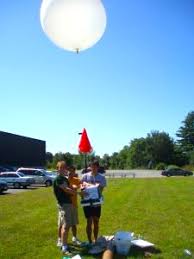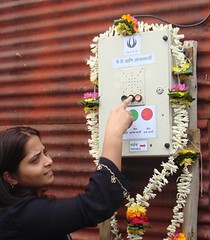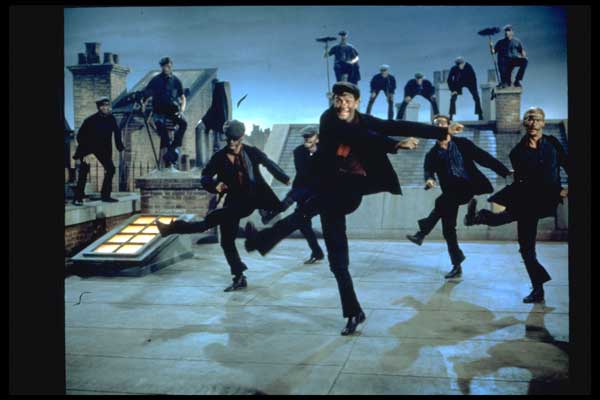Bigger, Slower, Cheaper: Detechnologizing Products

An example of a child's See-and-Say Toy.
In our last class, Rich Fletcher talked to us about de-technologization (is that even a word?). The point being, that Moore’s law, though useful and good in some respects, can be detrimental in other ways. That the push for smaller, faster, cutting edge (read: “more expensive”) leaves a lot to be desired. Most notably in developing nations who can’t afford (and don’t need!) the latest-greatest but could benefit substantially from an affordable alternative. But even first world citizens feel the curse of technology. I’m too young to remember, but my older and wiser family members talk fondly of the days when they could fix their own cars (or insert another piece of common household appliances)and bemoan the fact that now the task has become so complex that only the dealer has the required tools. So the solution, or so Mr. Fletcher proposes, is to rethink design to be bigger, slower, and cheaper. One of the projects he presented involved bringing internet to remote places. The catch is that is wasn’t real time. It was “slower” and it was a ton “cheaper”. But it was also better than no internet. Another example he talked about is the design of children’s toys. They are incredibly elegant in their simplicity, durability, and human-scaled-ness. It was inspiring to look at the workings of a See-and-Say toy that used only simple mechanical process to say the words corresponding to pictures.
“Bigger, cheaper, slower” is by no means a new concept. Below are some interesting, recent examples of “de-technologized” products:
 Home Voltage Optimization – Cheaper!
Home Voltage Optimization – Cheaper!
I know £299 doesn’t sounds cheap, but this technology, which helps reduce and stabilize electricity usage and therefor cuts energy costs and carbon emissions, has traditionally been sized and priced solely for industrial use. This is the first time that the technology has been reduced both in size and cost to enable the average consumer to take advantage of it at home, and that’s pretty exciting.
 Students Take Pictures of Earth From Space – Cheaper! Slower!
Students Take Pictures of Earth From Space – Cheaper! Slower!
For under $200, students at MIT and more recently in Australia, sent a digital camera into space on a balloon and took stunning pictures of Earth. In the past, only companies or government agencies with lots of money were able to accomplish such a feat. Granted, they didn’t stream the pics back in real time, but who cares?
 Question Box – Cheaper! Slower!
Question Box – Cheaper! Slower!
In the them of bringing internet to distant places, this project brings the power of Google to villages without internet, through an old-fashioned intermediary, the call box. People with a question can press a button and someone on the other end of the phone, sitting at an internet-connected computer, looks up the answer for them. It’s such a simple solution to the hard “last mile” (or last 100 miles) problem.
Though these examples are encouraging and show that people still appreciate a simple, elegant design that gets the job done, the main push still seems to be turning to technology to solve all of our problems. One recent trend which amuses me is the apparent need to use technology and on-line social networks to connect with people who live and work in the same physical location as you (whether that is the same city, the same neighborhood, or the same building!).
It appears the progression went like this: Back in the old days, people could only talk face-to-face, but the use of smoke signals and semaphore show that people quickly realized the benefit of long distance communication. Speed through telegrams and the telephone to the internet and appreciating being connected to loved ones who are far away. That’s great! But the backlash is setting in, people realize they spend more time “connecting” to people on-line and that traditional, location-based interactions are lacking.
Technology to the rescue! Now you can use Stackd to meet people who work in your office building or join Facebook neighborhoods to find out who lives near you and what’s going on at the local park. Though I do think it is great that these tools encourage actual interaction, it seems kinda ironic that in order to use them, you must be on your computer. What does it say about our society that we can’t even say “Hi!” the person we ride in the elevator with, but instead rely on better technology to facilitate such a traditionally simple and tech free encounter?
In order to de-technologize what has become the convoluted way people interact while in close proximity to each other, I would like to re-introduce the tin can phone!

Utopian City
One of the ideas discussed in Future Craft was how products can shape society, and that, possibly, by being conscious of what we are designing and producing, we can influence society – ideally, for the better!
Before you can influence society in the way that you want, first you must know what you want. To that end, we were asked to visualize our idea of a Utopian City. What would society be like, if it were perfect, or at least, more perfect than today.
In considering all the complex aspects that go into building and sustaining a city, the following things stuck out to me as being very important:
- Energy (efficiency, source, and smart distribution and loading)
- Transportation
- Food
- Waste (removal and processing)
- Layout/Efficient use of limited space
- Cost of living
- Community (support and encourage community development)
Though this is a lot to cover, I’ll play with a couple ideas that stuck with me and bridge multiple aspects.
Use Rooftops!
There is such little space in cities to begin with, that it seems silly to waste such usable areas as rooftops. Occasionally people will have roof decks, but in general, city roof tops are only accessible to the likes of Mary Poppins and the chimney sweeps. Imagine if instead, every roof had a garden, or solar panels, or a windmill. Since most city buildings house multiple family units ‘under one roof’, roof gardens could be communally tended by the people in it, or set up like a CSA. Another option would be for rooftops to be public property which the city cultivates and harvests, providing the food to the city inhabitants (pricing structures could vary). Building units could also decide to maintain energy generating systems on their roof instead. Either way, roof tops would be contributing to the community while also providing local, reusable resources in the form of energy or food.
roof tops are only accessible to the likes of Mary Poppins and the chimney sweeps. Imagine if instead, every roof had a garden, or solar panels, or a windmill. Since most city buildings house multiple family units ‘under one roof’, roof gardens could be communally tended by the people in it, or set up like a CSA. Another option would be for rooftops to be public property which the city cultivates and harvests, providing the food to the city inhabitants (pricing structures could vary). Building units could also decide to maintain energy generating systems on their roof instead. Either way, roof tops would be contributing to the community while also providing local, reusable resources in the form of energy or food.
Go Underground!
Another space eater is motorized vehicle traffic and support systems. Imagine how much space is devoted to streets and parking in cities! I know saying ‘get rid of the cars!’ is not a novel idea, but what caught me in the “get rid of the cars!” cries was how to handle basic logistics with no motorized vehicles. How would new dish washers be delivers? How would Ambulances arrive at houses? We do need some sort of industrial transportation infrastructure. As a compromise, I propose keeping streets, but moving them underground. Actually, moving a lot of things underground. Imagine, the only thing moving above ground are people using their own power –walking or bikes. How much more space in the city could now be used for parks, art galleries, fabrication workshops, theatres, etc.? While humans moved around above ground, professional, necessary serves would happen underground – mass transportation, bulk delivery, waste removal. People would not have personal cars in the city, but if they needed to transport something larger (say, a musician needs to get to a gig with his bass and amp) he could call the equivalent of a taxi to take him there – underground! Being able to quickly get from one place to another, and move through loading docks and other areas meant specifically for larger equipment would be a huge boon to business. Additionally, home delivery would be standard for many items we currently purchase and transport ourselves. It would be much more efficient for Ikea or grocery stores to make deliveries to each house from one larger truck than for everyone to individually transport their items home. And since every basement would be a loading dock, it would be convenient for the individual as well.
Community Space!
With all this reclaimed roadway, there is now space to use for community development. Yes, parks are great, but what about other community resources, like art galleries, fabrication workshops, community theatres, auditoriums, educational centers, sports complexes. Though some of these exist in limited form, and mostly by expensive subscription, if there was space designated for such community resources, they could exist in more places, meaning people wouldn’t need to use cars to get to them, and would also help build the community, giving people something to gather together for, besides the local pub.


 Picasa
Picasa Twitter
Twitter LinkedIn
LinkedIn Flickr
Flickr